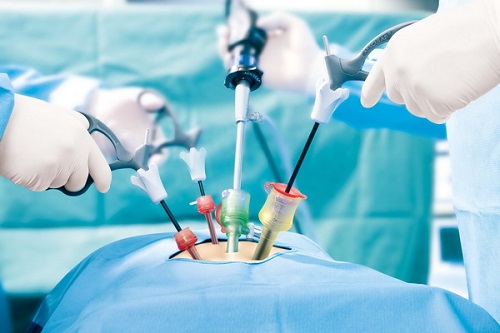Hysteroscopic Surgeries
Hysteroscopic surgeries are minimally invasive procedures that use a hysteroscope, a thin, lighted tube, to examine and treat problems within the uterus. The hysteroscope is inserted through the vagina and cervix, allowing the surgeon to view the uterine cavity on a monitor and perform surgical interventions without making any abdominal incisions. This approach minimizes recovery time, reduces pain, and lowers the risk of complications compared to traditional open surgery.
Common types of hysteroscopic surgeries include polypectomy, myomectomy, endometrial ablation, and adhesiolysis. A polypectomy involves the removal of uterine polyps, which are benign growths on the lining of the uterus that can cause irregular bleeding. Myomectomy targets the removal of submucosal fibroids, which are fibroids that grow into the uterine cavity and can lead to heavy menstrual bleeding and infertility. Endometrial ablation is a procedure to destroy the lining of the uterus to treat abnormal uterine bleeding. Adhesiolysis is the removal of intrauterine adhesions or scar tissue, often a result of previous surgeries or infections.
Hysteroscopic surgeries are usually performed on an outpatient basis, meaning patients can go home the same day. The procedure typically involves a short duration of anesthesia, and most hysteroscopic surgeries are completed within 30 minutes to an hour. The minimal invasiveness of the procedure allows for a quicker recovery, with many patients returning to their normal activities within a few days. This swift recovery is one of the significant advantages of hysteroscopic surgery.
The preparation for a hysteroscopic surgery includes a thorough medical evaluation and possibly preoperative tests to ensure the patient is a suitable candidate for the procedure. Patients may be advised to avoid eating and drinking for a certain period before the surgery. Additionally, some procedures may require the cervical canal to be dilated to allow the hysteroscope to pass through more easily. This dilation can be performed just before the surgery or a few hours in advance, depending on the specific circumstances.
In conclusion, hysteroscopic surgeries offer a highly effective and minimally invasive option for diagnosing and treating various uterine conditions. The benefits of these procedures include reduced recovery time, minimal pain, and a lower risk of complications compared to traditional surgical methods. As with any surgical procedure, it is essential for patients to discuss the potential risks, benefits, and alternatives with their healthcare provider to ensure the best treatment plan tailored to their individual needs.



.png)
